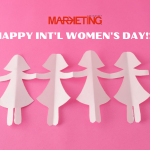
Nike sponsored more than half of the competing teams
Nike has partially attributed a 7% increase in quarterly revenues to its unprecedented investment in the 2019 Women’s World Cup.
The company reported sales of USD$10.7bn in Q1 of the 2020 fiscal financial year. Nike’s chairman, president and chief executive Mark Park, said the results “proved the depth and balance of our complete offense”, noting sales were driven by all markets.
The brand’s apparel revenue from the 2019 Women’s World Cup was four times bigger than it was for the 2015 event, while Nike’s international women’s business (outside of the US) grew 16%.
Park attributed this to “an incredible summer of celebrating female athletes in both footwear and apparel”.
Nike’s women’s business as a whole was highlighted as an area now in “accelerated growth”, alongside performance basketball, international and apparel.
“This quarter, we were all inspired by the incredible athletes and performances at the Women’s World Cup,” he said. “It was also a tremendous stage for Nike Innovation.
“We’re delivering more choice and fresh options on some of our hottest products, an expansion of both new and existing platforms and a deeper commitment to serving a wider range of athletes.”
Nike reported a rise in ‘demand creation’ expenses of 6%, which brought total sales generation expenditures to $1bn. The company said this was “primarily” due to “higher advertising expenses and sports marketing investments” in the quarter.
It sponsored 14 of the 24 teams in the World Cup – including the winners, America – and claimed 60% of goals scored in the tournament were done so by wearers of the Mercurial 360.
Overarching selling, general and administrative expense grew 9%. Chief financial officer Andy Campion attributed the increase to a continued to investment in digital transformation as well as “brand marketing associated with the Women’s World Cup and the Joyride innovation launch”.
Nike had seen success from its investment in the summer tournament before it had even finished. Social media analytics firm Talkwalker found Nike had a 51.3% share of brand voice across the month-long contest, an accomplishment driven by its high-quality creative work based around the concept of dreams.
Campion added Nike now plans to continue “making more athletes comfortable and confident” as part of its creative strategy heading into next year’s Tokyo Olympics, following the success of spotlighting the lesser-known female footballers.
source: http://www.thedrum.com
MARKETING Magazine is not responsible for the content of external sites.
After 20 years of evolving technology, shifting market trends, and adapting to changing consumer behaviour, the media landscape has nearly reached saturation.
We’ve optimised to the fullest, providing advertisers with abundant choices across technology, platforms, data-driven marketing, CTV, OTT, DOOH, influencer marketing, retail, etc.
Media specialists have diversified, but with more options comes the challenge of maintaining income growth. The industry is expanding, but revenue isn’t keeping pace.
Now, we’re at a TURNING POINT: time to explore and harness new sustainable revenue streams. While GroupM forecasts a 7.8% global ad revenue growth in 2024, challenges like antitrust regulation, AI and copyright issues, and platform bans persist.
Collaboration is key: partnerships that thrive on synergy, shared values, and aligned goals are becoming increasingly essential.
Hence, the Malaysian Media Conference, in its 20th year, has assembled the partners and players under one roof on October 25 for a day of learning, sharing, and exploring.
REGISTER NOW











